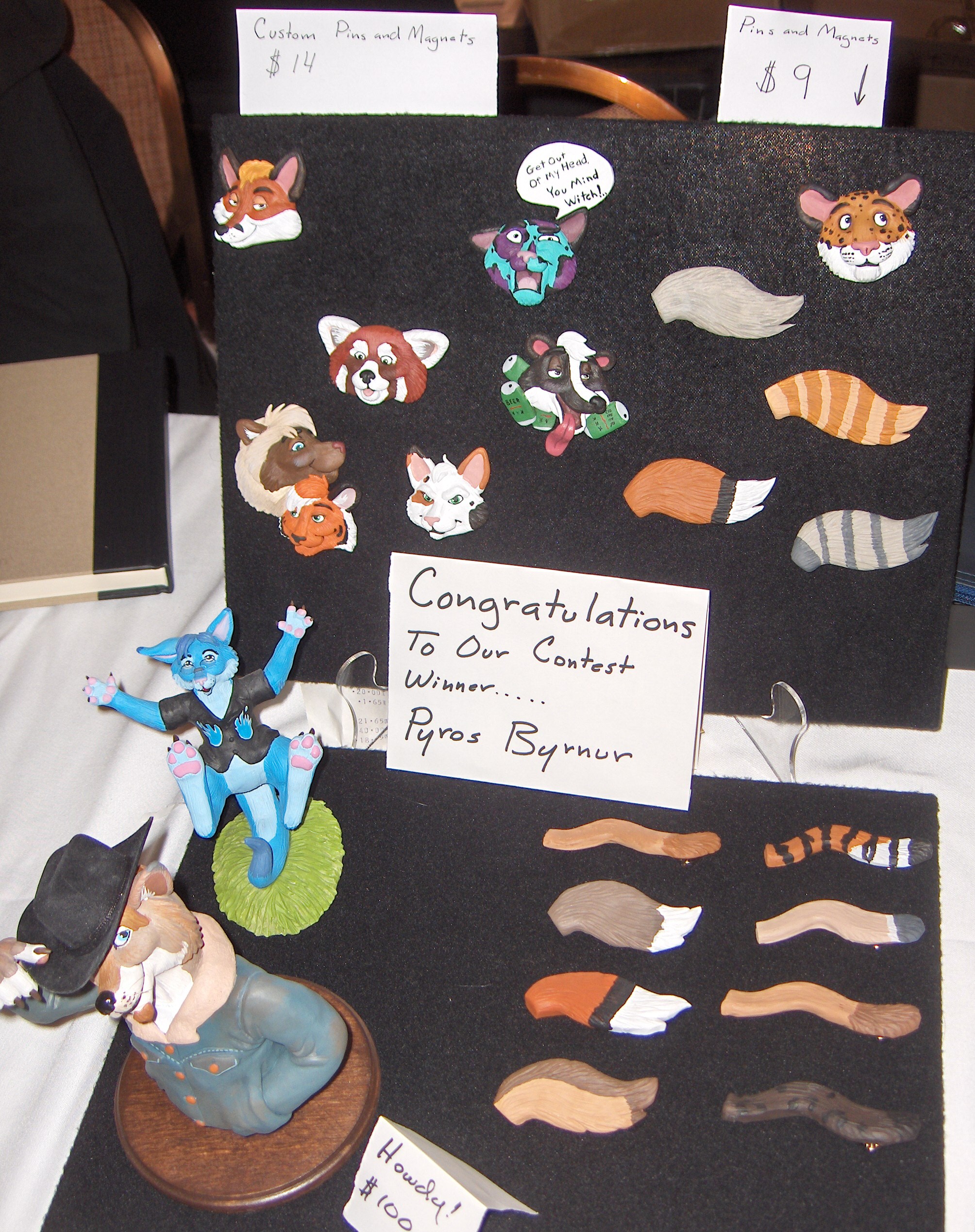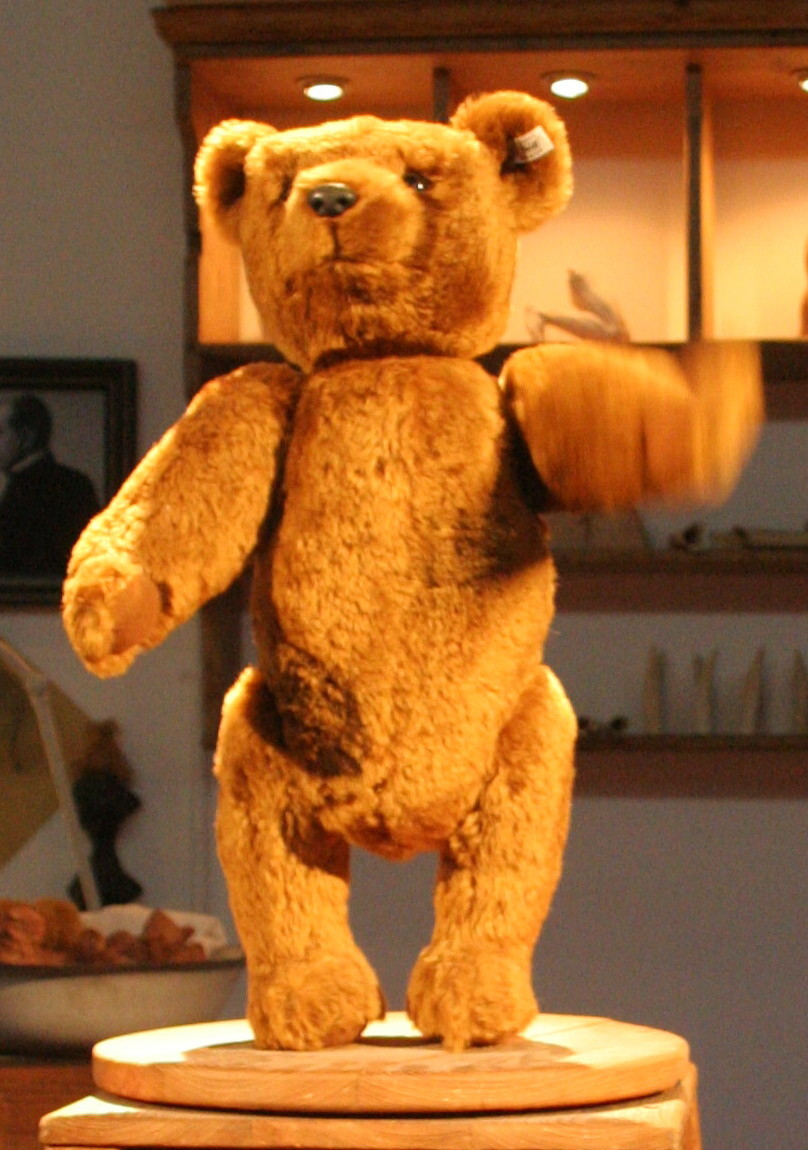|
Fursuit
Fursuits are custom-made anthropomorphic animal costumes owned and worn by cosplayers and members of the furry fandom, commonly known as "furries"; a furry who wears a fursuit is called a fursuiter. The term is believed to have been coined in 1993 by Robert King. Unlike mascot suits, which are usually affiliated with a team or organization, fursuits represent an original character created by their wearer, and are often better-fitting and more intricately crafted, with features such as a moving jaw. Fursuits are made in a wide range of styles, from cartoonish to highly realistic. History An early fursuit worn by former Disney mascot wearer Robert Hill, based on the feminine character "Hilda the Bamboid", appeared at the first ever furry convention, ConFurence 0, in 1989, but most furries of the time simply wore ears and tails, influenced by their intersection with the anime and sci-fi fandoms. Fursuits did not become widely known until the mid-1990s and the rise of the In ... [...More Info...] [...Related Items...] OR: [Wikipedia] [Google] [Baidu] |
Furry Fandom
The furry fandom is a subculture interested in Anthropomorphism, anthropomorphic animal characters. Some examples of anthropomorphic attributes include exhibiting human intelligence and facial expressions, speaking, walking on two legs, and wearing clothes. The term "furry fandom" is also used to refer to the community of people who gather on the Internet and at furry conventions. History In 1976, cartoonists Ken Fletcher and Reed Waller created the amateur press association ''Vootie'', which was dedicated to animal-focused art. Many of its featured works contained adult themes, such as ''"Omaha" the Cat Dancer'', which contained explicit sex. ''Vootie'' grew a small following over the next several years, and its contributors began meeting at science fiction and comics conventions. According to fandom historian Fred Patten, the concept of ''furry'' originated at a science fiction convention in 1980, when a character drawing from Steve Gallacci's ''Albedo Anthropomorphics'' starte ... [...More Info...] [...Related Items...] OR: [Wikipedia] [Google] [Baidu] |
Furry Convention
A furry convention (also furry con or fur con) is a fan convention, formal gathering of members of the furry fandom – people who are interested in the concept of fictional non-human animal characters with anthropomorphism, human characteristics. These conventions provide a place for fans to meet, exchange ideas, transact business and engage in entertainment and recreation centered on this concept. Originating in California during the mid-1980s, as of 2016 there are over 50 furry conventions worldwide each year. As of 2025, the largest furry convention is Furry Weekend Atlanta in Atlanta, Georgia. It had a self-reported attendance of 17,736 in 2025. Furry conventions offer a range of volunteer-led programming, usually focusing on anthropomorphic art, crafts, music and literature. Some raise money for Charitable organization, charity. Attendees often dress up in fursuits and wear artistic name badges for identification, though the majority do not. They may also spend money on th ... [...More Info...] [...Related Items...] OR: [Wikipedia] [Google] [Baidu] |
Mascot
A mascot is any human, animal, or object thought to bring luck, or anything used to represent a group with a common public identity, such as a school, sports team, university society, society, military unit, or brand, brand name. Mascots are also used as fictional, representative spokespeople for consumer products. In sports, mascots are also used for merchandising. Team mascots are often related to their respective team athletic nickname, nicknames. This is especially true when the team's nickname is something that is a living animal and/or can be anthropomorphism, made to have humanlike characteristics. For more abstract nicknames, the team may opt to have an unrelated character serve as the mascot. For example, the sport, athletic teams of the University of Alabama are nicknamed the Alabama Crimson Tide, Crimson Tide, while their mascot is an elephant named Big Al (mascot), Big Al. Team mascots may take the form of a logo, person, live animal, inanimate object, or a costumed c ... [...More Info...] [...Related Items...] OR: [Wikipedia] [Google] [Baidu] |
Quadrupedalism
Quadrupedalism is a form of locomotion in which animals have four legs that are used to bear weight and move around. An animal or machine that usually maintains a four-legged posture and moves using all four legs is said to be a quadruped (from Latin ''quattuor'' for "four", and ''pes'', ''pedis'' for "foot"). Quadruped animals are found among both vertebrates and invertebrates. Quadrupeds vs. tetrapods Although the words ‘quadruped’ and ‘tetrapod’ are both derived from terms meaning ‘four-footed’, they have distinct meanings. A tetrapod is any member of the taxonomic unit Tetrapoda (which is defined by descent from a specific four-limbed ancestor), whereas a quadruped actually uses four limbs for locomotion. Not all tetrapods are quadrupeds and not all quadrupedal animals are tetrapods; some arthropods are adapted for four-footed locomotion, such as the raptorial Mantodea, or mantises, and the Nymphalidae, or brush-footed butterflies—the largest butterfly fa ... [...More Info...] [...Related Items...] OR: [Wikipedia] [Google] [Baidu] |
WTAE-TV
WTAE-TV (channel 4) is a television station in Pittsburgh, Pennsylvania, United States, affiliated with ABC. It has been owned by Hearst Television since the station's inception, making this one of two stations that have been built and signed on by Hearst (alongside company flagship WBAL-TV in Baltimore). WTAE-TV's studios are located on Ardmore Boulevard ( PA 8) in the suburb of Wilkinsburg (though with a Pittsburgh mailing address), and its transmitter is located in Buena Vista, Pennsylvania. History WTAE-TV began broadcasting on September 14, 1958; the station has been Pittsburgh's ABC affiliate since its sign-on. Pittsburgh had only one major commercial television station for close to a decade— DuMont-owned WDTV (channel 2, now KDKA-TV), which signed on in 1949 and carried programs from all four television networks (DuMont, ABC, NBC and CBS). Further development of stations in Pittsburgh was halted by the Federal Communications Commission (FCC)'s freeze on licens ... [...More Info...] [...Related Items...] OR: [Wikipedia] [Google] [Baidu] |
The Guardian
''The Guardian'' is a British daily newspaper. It was founded in Manchester in 1821 as ''The Manchester Guardian'' and changed its name in 1959, followed by a move to London. Along with its sister paper, ''The Guardian Weekly'', ''The Guardian'' is part of the Guardian Media Group, owned by the Scott Trust Limited. The trust was created in 1936 to "secure the financial and editorial independence of ''The Guardian'' in perpetuity and to safeguard the journalistic freedom and liberal values of ''The Guardian'' free from commercial or political interference". The trust was converted into a limited company in 2008, with a constitution written so as to maintain for ''The Guardian'' the same protections as were built into the structure of the Scott Trust by its creators. Profits are reinvested in its journalism rather than distributed to owners or shareholders. It is considered a newspaper of record in the UK. The editor-in-chief Katharine Viner succeeded Alan Rusbridger in 2015. S ... [...More Info...] [...Related Items...] OR: [Wikipedia] [Google] [Baidu] |
Torso
The torso or trunk is an anatomical terminology, anatomical term for the central part, or the core (anatomy), core, of the body (biology), body of many animals (including human beings), from which the head, neck, limb (anatomy), limbs, tail and other appendages extend. The tetrapod torso — including that of a human body, human — is usually divided into the ''chest, thoracic'' segment (also known as the upper torso, where the forelimbs extend), the ''abdomen, abdominal'' segment (also known as the "mid-section" or "midriff"), and the ''pelvic'' and ''perineum, perineal'' segments (sometimes known together with the abdomen as the lower torso, where the hindlimbs extend). Anatomy Major organs In humans, most critical Organ (anatomy), organs, with the notable exception of the brain, are housed within the torso. In the upper chest, the heart and lungs are protected by the rib cage, and the abdomen contains most of the organs responsible for digestion: the stomach, which breaks ... [...More Info...] [...Related Items...] OR: [Wikipedia] [Google] [Baidu] |
Human Leg
The leg is the entire lower limb (anatomy), limb of the human body, including the foot, thigh or sometimes even the hip or Gluteal muscles, buttock region. The major bones of the leg are the femur (thigh bone), tibia (shin bone), and adjacent fibula. There are 30 bones in each leg. The thigh is located in between the hip and knee. The calf (leg), calf (rear) and Tibia#Structure, shin (front), or shank, are located between the knee and ankle. Legs are used for standing, many forms of human movement, recreation such as dancing, and constitute a significant portion of a person's mass. Evolution has led to the human leg's development into a mechanism specifically adapted for efficient bipedalism, bipedal gait. While the capacity to walk upright is not unique to humans, other primates can only achieve this for short periods and at a great expenditure of energy. In humans, female legs generally have greater hip anteversion and tibiofemoral angles, while male legs have longer femur a ... [...More Info...] [...Related Items...] OR: [Wikipedia] [Google] [Baidu] |
Further Confusion 2007 Fursuit Post-parade Photoshoot
Further or furthur, alternatively :wiktionary:farther, farther, may refer to: *Furthur (bus), ''Furthur'' (bus), the Merry Pranksters' psychedelic bus *Further (band), a 1990s American indie rock band *Furthur (band), a band formed in 2009 by Bob Weir and Phil Lesh *Further (The Chemical Brothers album), ''Further'' (The Chemical Brothers album), 2010 *Further (Flying Saucer Attack album), ''Further'' (Flying Saucer Attack album), 1995 *Further (Geneva album), ''Further'' (Geneva album), 1997, and a song from the album *Further (Richard Hawley album), ''Further'' (Richard Hawley album), 2019 *Further (Solace album), ''Further'' (Solace album), 2000 *Further (Outasight album), ''Further'' (Outasight album), 2009 *Further (VNV Nation song), "Further" (VNV Nation song), a song by VNV Nation *"Further", a song by Longview from the album ''Mercury (Longview album), Mercury'', 2003 *Further Triennial, an announced contemporary art triennial focusing on Northern California artists, debutin ... [...More Info...] [...Related Items...] OR: [Wikipedia] [Google] [Baidu] |
Stuffed Animal
A stuffed toy is a toy with an outer fabric sewn from a textile and stuffed with flexible material. They are known by many names, such as plush toys, plushies, lovies and stuffies; in Britain and Australia, they may also be called soft toys or cuddly toys. In the late 19th century, Margarete Steiff and the Steiff company of Germany created the first stuffed animals, which gained popularity after a political cartoon of Theodore Roosevelt in 1902 inspired the idea for " Teddy's bear". In 1903, Peter Rabbit was the first fictional character to be made into a patented stuffed toy. In 1921, A. A. Milne gave a stuffed bear to his son Christopher which would inspire the creation of Winnie-the-Pooh. In the 1970s, London-based Hamleys, the world's oldest toy store, bought the rights to Paddington Bear stuffed toys. In the 1990s, Ty Warner created Beanie Babies, a series of animals stuffed with plastic pellets that were popular as collector's items. Stuffed toys are made in man ... [...More Info...] [...Related Items...] OR: [Wikipedia] [Google] [Baidu] |
Fake Fur
Fake fur, also called faux fur, is a Pile (textile), pile fabric engineered to have the appearance and warmth of fur. Fake fur can be made from a variety of materials, including polyester, nylon, or Acrylic fiber, acrylic. First introduced in 1929, fake furs were initially composed of hair from the South American alpaca. The ensuing decades saw substantial improvements in their quality, particularly in the 1940s, thanks to significant advances in textile manufacture, textile manufacturing. By the mid-1950s, a transformative development in fake furs occurred when alpaca hair was replaced with acrylic polymers, leading to the creation of the synthetic fur we recognize today. The promotion of fake furs by animal rights and animal welfare organizations has contributed to its increasing popularity as an animal-friendly alternative to traditional fur clothing. Uses Fake fur is used in all applications where real fur would be used, including but not limited to stuffed animals, f ... [...More Info...] [...Related Items...] OR: [Wikipedia] [Google] [Baidu] |









